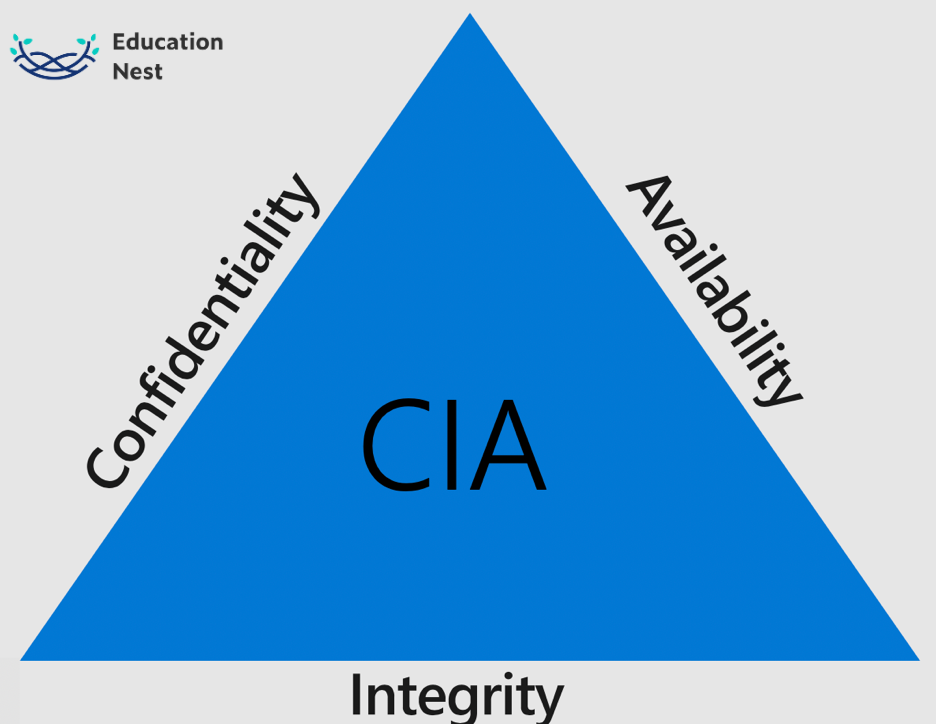“CIA triad” is an acronym that stands for “confidentiality, integrity, and availability.” The CIA trio is a well-known paradigm used to construct security systems. They are used to identify flaws and propose solutions to problems.
After completing all three standards, the organization’s security profile should be stronger and more prepared to deal with threats.
Let’s understand the meaning of the CIA triad:
- Confidentiality: The efforts made by an organization to keep data private or hidden are referred to as confidentiality.
- Integrity: Integrity is ensuring that your data is correct and has not been altered. The integrity of your data will be preserved only if it is reliable, correct, and genuine.
- Availability: Even if data is kept secret and its integrity is maintained, it is sometimes rendered meaningless if it cannot be accessible by employees and clients. This requires systems, networks, and applications to function correctly and at the right time.
History of CIA Triad
The well-known CIA Triad proposal for information security was first proposed by the US government’s National Institute of Standards and Technology in the 1980s (NIST). The CIA Triad (Confidentiality, Integrity, and Availability) is a set of concepts in information security that has been utilized for many years. Its origins can be traced back to the early days of computer security research. The CIA Triad is frequently attributed to the information security industry. However, no one knows for sure.
Importance of CIA Triad

- We use the CIA to determine an organization’s security and data safety. Overall, it balances how the three pillars of the CIA triangle—confidentiality, integrity, and availability—work together. Each attempt to protect digital information must adhere to the framework’s concept of not undermining another barrier of defense.
- The CIA triad may be used offensively and defensively in business, and all global Certified Ethical Hacker certificates will teach you why and when to utilize it.
- Furthermore, the CIA Triad detects risk elements in IT infrastructure and information security systems. It also serves as a hub for more complex risk analysis and security measure management, such as the National Vulnerability Database and the Common Vulnerabilities and Exposures (CVE) list.
The CIA Triad model can be applied in a variety of ways, including:
- Determining the best strategy to enforce authentication and authorization requirements.
- Knowing how to protect the critical company, employee, and customer data.
- Assuring the security of any additional devices a corporation adds without worsening risks.
Examples of CIA Triad
Confidentiality
Customers of online stores have a right to expect that the personal information they give to a company (like credit card, contact, shipping, or other personal information) will be protected in a way that prevents unauthorized access or exposure.
You Must Know: Top Data Engineer Interview Questions: How to Answer
Integrity
People want accurate information about products and pricing when they shop online and don’t wish for other facts to change after placing an order. Customers must have confidence that their account balances and additional financial information are secure.
Availability
The availability pillar of the CIA triad will be jeopardized if there is a power outage or other type of instability and there is no BCDR plan to assist users in recovering and regaining access to virtual servers and systems.
Conclusion
The CIA Triad can be used as a good way to measure how important the security measures are that a company takes into account when making a security agenda.
